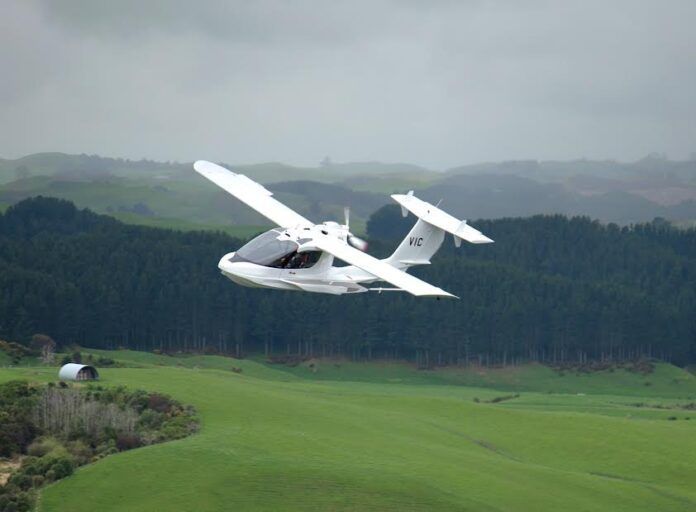A New Zealand company says it’s solved one of the biggest safety issues affecting amphibious aircraft operations. Paul Vickers, president of Vickers Aircraft, told AVweb the WAVE pusher amphib will not flip if the pilot forgets to raise the landing gear before a water landing. Vickers declined to discuss the flip-proof design in detail for proprietary reasons but said it’s among a host of innovations included in the plane, which he said recently completed flight testing. “The WAVE performed exceptionally well, so well in fact that we believe we may have achieved a world-first, a 100% score, passing all criteria and requiring zero changes,” Vickers said. “Meaning the prototype is perfect and can enter production, first components are underway.”
Vickers said manufacturing of the first three production models of the plane has begun in New Zealand and the initial output will be about 35 aircraft per year. However, he said the plan is to move production to the U.S. to take advantage of the new MOSAIC rules for Light Sport aircraft. He said most of the company investors are from the U.S. and the principal market for the plane will be in North America so it makes sense to build it in the U.S., likely in one of the southern states.
Meanwhile, after 14 years of development, Vickers said his company has created a versatile, relatively fast (120 knots cruise) aircraft that is easy to fly and durable in all environments, including ocean operations. “This is not a toy aircraft,” he said. “It’s a solid workhorse aircraft that’s really tough.” He said it will be offered as a base aircraft with a Rotax 916 iS engine. Extra cost options include folding wings, a reversible prop and electric hull thrusters for enhanced water handling.
Vickers, whose background is in boat manufacturing, said the plane incorporates materials and processes that improve manufacturing efficiency and make the aircraft more durable. For instance, the fuselage is a single piece and includes hinges and other fixtures right out of the mold.



































Definitely started with the Icon A5 and went from there. Hope they make a plane safer, faster, and most of all more affordable.
Hopefully they aren’t saddled with the unreasonable business expectations that are affecting Icon. I’d be happy to live in a world with lots of A5 clones! It’s a clear step forward in the design of single amphibs.
Nothing is unflippable for a talented flipper.
“we may have achieved a world-first, a 100% score, passing all criteria and requiring zero changes”
Apart from the ones you can see in press releases at different times, I presume…
I like the concept where you can carry two normal people and stuff with plenty of fuel . The real question is will it actually operated in real lake environments. it is only shown operating on very smooth lakes. will it land and take off in 1 foot or 30cm waves? and what happens when it hits a rogue wave of 2 ft in height which are very common in waters with boats operating on recreational lakes caused by when two boat wakes happen to combine at exactly the wrong time and create a really big hump. It has happened to me in my Seabee and it handled it fine (big jolt) but it has a deep v hull and is very stout. It happened to a friend of mine in a Lake and it plunged in, took out the windshield and a float and flooded the cabin but it was still running and made it to shore.
Idiot with more $ than skill or judgement- “Hold muh beer”.
The Super Petrel LSA amphib has been proven to be flip-proof years ago. They even have a video of it landing by accident on the water with gear down on their website. Came to a stop quick, but no damage sustained. Got checked out to fly it several years back.